Table of content
What Is Pre-Employment Testing? A Complete Guide with DISC Integration
What is pre-employment testing? Explore its benefits and see how DISC personality testing helps employers identify perfect-fit candidates.
Choosing the right candidate is one of the biggest challenges for any employer. Traditional interviews and resumes often miss key details about a person’s real potential. That’s where what is pre employment testing becomes essential. These assessments give a clearer view of a candidate’s skills, mindset, and job fit before hiring. This article explores how pre-employment testing works, why it’s important, and how it can help you make smarter, fairer, and more confident hiring decisions.
What Is Pre-Employment Testing?
What is pre employment testing means using simple tests to check a candidate’s skills and behavior before hiring. These tests help employers make fair and confident choices. They replace guesswork with real data.
With pre-employment testing, companies can see how people think, solve problems, and fit into the team. It gives a clearer view than a résumé or interview alone. This helps managers focus on candidates who match the job best.
Common types of pre-employment testing include cognitive ability, job-related skills, and personality assessments. Each test looks at a different side of job performance. Together, they show who can learn fast, work well, and adapt easily.
Adding pre-employment testing early in hiring saves time and cuts bias. Each test should fit the job and follow EEOC compliance rules. This keeps the process fair and consistent for everyone.
In short, what is pre employment testing helps companies hire smarter. It improves accuracy, builds stronger teams, and makes recruitment faster and more reliable.
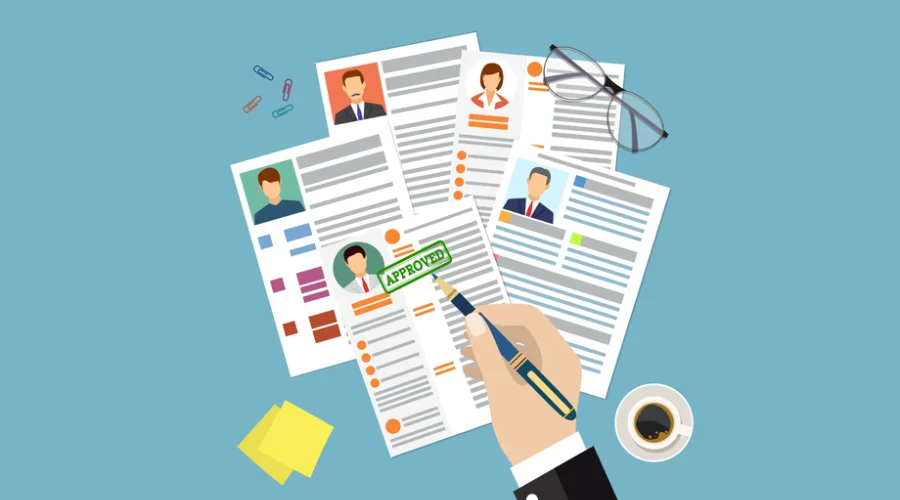
Why Pre-Employment Assessments Are Crucial for Hiring Success
Knowing what is pre employment testing helps companies make smarter hiring decisions. These assessments bring clarity and fairness to the selection process. Instead of relying on guesswork, recruiters can see who truly fits the job and the company culture.
Here’s why pre-employment assessments are essential for hiring success:
- Bring objectivity – Tests use real data to measure skills, personality, and thinking ability. This reduces bias and builds fairness in hiring.
- Predict future performance – Valid tests show who is most likely to succeed at work. They help you spot top talent early.
- Save time and effort – Screening tests quickly filter out unqualified candidates. This lets hiring teams focus on strong applicants only.
- Match people to the right jobs – Assessments look beyond resumes. They help find candidates whose traits and abilities truly fit the role.
- Lower turnover – When people fit their jobs well, they stay longer and perform better.
- Ensure fair hiring – Standardized tests create a consistent and legally safe hiring process.
- Strengthen interviews – Test results guide better interview questions and help assess real strengths.
In simple terms, knowing pre-employment testing helps businesses hire smarter and faster. It reduces mistakes, saves time, and builds stronger, more reliable teams.
Key Categories of Pre-Employment Tests
Understanding the key categories of what is pre employment testing allows employers to evaluate candidates more effectively. Each type of test measures a different aspect of job readiness, helping organizations make informed and confident hiring decisions.
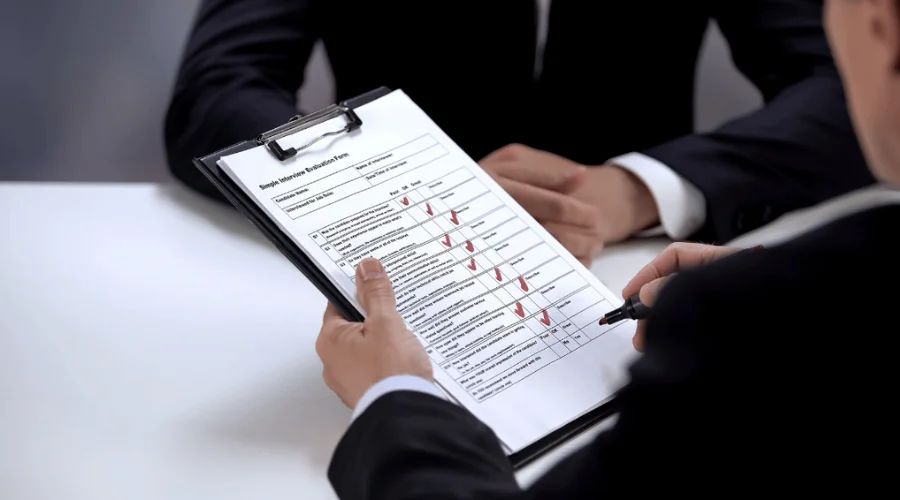
Job Knowledge Assessments
Job knowledge assessments measure how well a candidate understands the specific duties, tools, and processes of a role. These tests are often used for technical or professional jobs that require specialized knowledge.
For example, an accounting applicant might complete a test covering financial rules, accounting standards, or market analysis basics.
Benefits: They help employers confirm that candidates already have the required expertise to start the job confidently.
Limitations: These tests do not always show how well someone can apply that knowledge in real situations or assess soft skills like teamwork and communication.
Integrity and Ethics Evaluations
Integrity and ethics evaluations assess a candidate’s honesty, reliability, and moral values. They help predict whether someone is likely to act ethically and avoid harmful or dishonest behavior at work.
These tests are often used for jobs that require a high level of trust, such as finance, security, or data management. By applying integrity testing, employers can reduce risks like fraud, theft, or other unethical actions in the workplace.
Benefits: These tests help employers reduce risks such as fraud, theft, or unethical conduct.
Limitations: Candidates might try to give answers that seem more honest than they really are. Cultural differences can also affect how people interpret ethical behavior.
Cognitive and Analytical Ability Tests
Cognitive and analytical ability tests measure how well a candidate can think, reason, and solve problems. They also assess memory, logic, and critical thinking. These tests are strong indicators of job success, especially for complex roles that need deep analysis and decision-making.
HR teams often use them for positions like management, strategy, or consulting, where strong thinking skills are essential. For instance, a management consultant may take a test to show their ability to analyze data and plan effectively.
Benefits: These tests give employers an objective view of a person’s mental skills, which can be hard to judge during interviews.
Limitations: They can disadvantage people with test anxiety or different learning styles and may not measure hands-on or creative skills.
Personality Assessments (Featuring DISC Model)
Personality assessments help employers understand how candidates think, communicate, and work with others. They are often used to predict how well someone will fit into a team or company culture.
One of the most popular tools is the DISC Model, which divides behavior into four main types:
- Dominance (D): Focused on results, challenges, and control.
- Influence (I): Energetic, social, and persuasive.
- Steadiness (S): Patient, dependable, and supportive.
- Compliance (C): Detail-oriented, careful, and focused on accuracy.
Using the DISC assessment helps employers identify how a candidate’s natural behavior aligns with specific job requirements, leadership style, or team environment.
Benefits: It reveals how a person may communicate, handle conflict, and work under pressure - essential for collaboration and team building.
Limitations: DISC does not measure skills or predict performance directly, so it should support other testing methods.
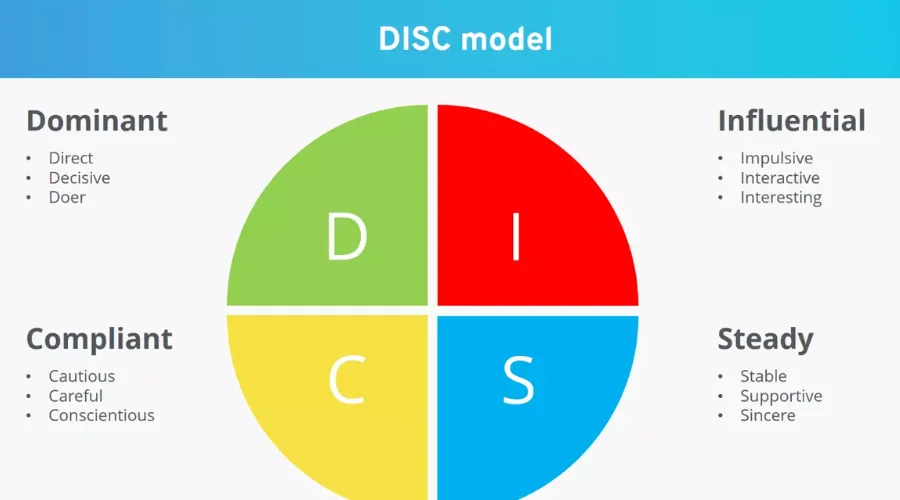
Emotional Intelligence (EI) Testing
Emotional intelligence (EI) testing measures how well a person understands and controls emotions — both their own and others’. People with high EI often work better with teams, show strong leadership, and handle stress calmly.
- Teamwork: Emotional awareness helps individuals read group dynamics, reduce conflict, and improve cooperation.
- Leadership: Leaders with high EI can inspire others, stay composed under pressure, and make thoughtful choices.
- Adaptability: Emotionally intelligent people adjust easily to change and stay positive in difficult situations.
- Empathy: Empathy allows them to connect with others, build trust, and understand different viewpoints.
Benefits: It helps identify people who can build relationships, handle stress, and maintain a positive work environment.
Limitations: EQ is subjective and can be hard to measure accurately with standard tests.
Skills-Based Evaluations
Skills-based evaluations test a candidate’s practical abilities needed for a specific job. They measure how well a person can perform key tasks such as typing, using software, or operating equipment.
For example, a graphic designer may complete a test to show skill in Adobe Creative Suite or other design tools.
Benefits: They confirm that a candidate can do the work as required from day one.
Limitations: They may overlook soft skills or a person’s potential to learn new tasks over time.
Physical and Fitness Assessments
Physical and fitness assessments measure a candidate’s strength, stamina, and coordination. These tests are important for jobs that involve manual work or physical effort.
For example, testing applicants for construction or firefighting roles helps ensure they can safely handle the physical demands of the job and reduces the risk of injury.
Benefits: They ensure the candidate can safely handle physical job demands and reduce the risk of injury.
Limitations: Employers must design these tests carefully to avoid discrimination or unfair barriers for individuals with disabilities.
Ensuring Test Validity and Reliability of Pre-Employment Tests
To make pre-employment tests useful, they must be both valid and reliable. Validity shows the test measures what it should. Reliability proves it gives steady results every time. Together, they ensure fair and accurate hiring decisions.
Start with a clear job analysis. Define the key skills, knowledge, and traits the job needs. Then, design the test to match those needs. Use the same testing steps and conditions for all candidates. This helps keep results consistent and fair.
There are three main types of validity to check:
- Content validity confirms that each question reflects real tasks from the job.
- Criterion-related validity shows test scores relate to actual job performance.
- Construct validity ensures the test measures the exact trait or skill it claims to.
Reliability focuses on how stable the results are. Use simple checks such as:
- Test-retest reliability gives the same test twice and compares the results.
- Internal consistency checks if questions that measure the same skill give similar answers.
- Inter-rater reliability ensures that different evaluators score the same way.
To stay fair and compliant, monitor results for any bias or unequal impact. Keep full records of how the test was built, scored, and used. When possible, work with experts who specialize in what is pre employment testing to help design or review your process.
Validated and reliable pre-employment tests improve hiring accuracy, reduce turnover, and support better hiring choices based on real data — not guesswork.
Integrating DISC Personality Testing into Pre-Employment Testing
Adding the DISC model to your hiring process makes it easier to understand how people behave at work. It gives structure and fairness to what is pre employment testing, helping employers see both skills and personality. With DISC, hiring teams can identify how a person communicates, reacts to challenges, and fits with team culture.
Matching DISC profiles with job roles:
Each job requires different traits. By matching DISC profiles with the role, recruiters can make better and more confident choices. This approach supports the main goal of what is pre employment testing - finding the right person for the right position.
For example:
- Customer service or sales roles often fit people with high Influence (I) and Steadiness (S) scores. They are friendly, patient, and enjoy working with others.
- Technical or leadership roles often need high Dominance (D) or Compliance (C) types. They are detail-focused, organized, and decisive.
Matching DISC insights with job requirements helps:
- Spot natural strengths and match them with role needs.
- Plan better interviews based on behavior and communication style.
- Reduce bias by using clear, data-based results.
- Improve the accuracy of hiring decisions through measured behavior.
When combined with other validated tools, DISC testing enhances behavioural assessment accuracy and makes pre-employment testing more fair, structured, and predictive.

Conclusion
Understanding what is pre employment testing gives you the power to make smarter, fairer hiring decisions. When combined with DISC personality insights, it helps reveal not just what candidates can do, but how they will perform in real workplace situations. Ready to discover the true potential of your team? Try a DISC assessment today and experience how behavioral insight can transform your recruitment process from guesswork to precision.
Read more about how DISC supports personality training and development!
FAQs
What is the most popular pre-employment test given?
The cognitive ability test is the most common type of pre-employment assessment. It measures how well a person learns, solves problems, and thinks under pressure. Many companies use it because it predicts job success better than resumes or interviews. This makes it a key part of pre-employment testing for finding top candidates.
What are the cons of a pre-employment test?
Pre-employment tests have limits. Some tests may not match real job tasks or can feel unfair to certain people. Others might create stress or bias if not well designed. To avoid this, employers should use trusted and validated tools. This ensures that what is pre employment testing stays fair and useful for both sides.
How can pre-employment tests be integrated into the hiring process?
These tests work best early in the hiring process, after reviewing resumes. They help narrow down applicants before interviews start. When used with job interviews and skill checks, they give a full picture of each person. This balanced method supports fair and accurate pre-employment testing decisions.
What makes a pre-employment test valid and reliable?
A valid test measures what it claims to measure. A reliable test gives the same result each time. To achieve both, tests should be built on research and used the same way for all applicants. This keeps pre-employment testing clear, fair, and accurate in predicting job performance.


Don't Let Your Potential Stay Hidden!
Take the DISC test today and discover your unique 'YOU', with deep insights into your true personality and potential.
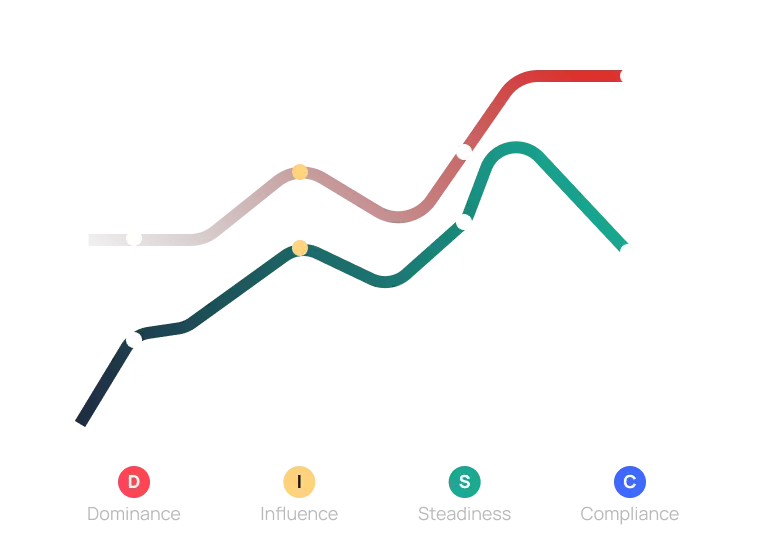
Represents your instinctive behaviors and desires.
Shows the behavioral tendencies you think you should exhibit in specific situations.
Related articles
You may also be interested in
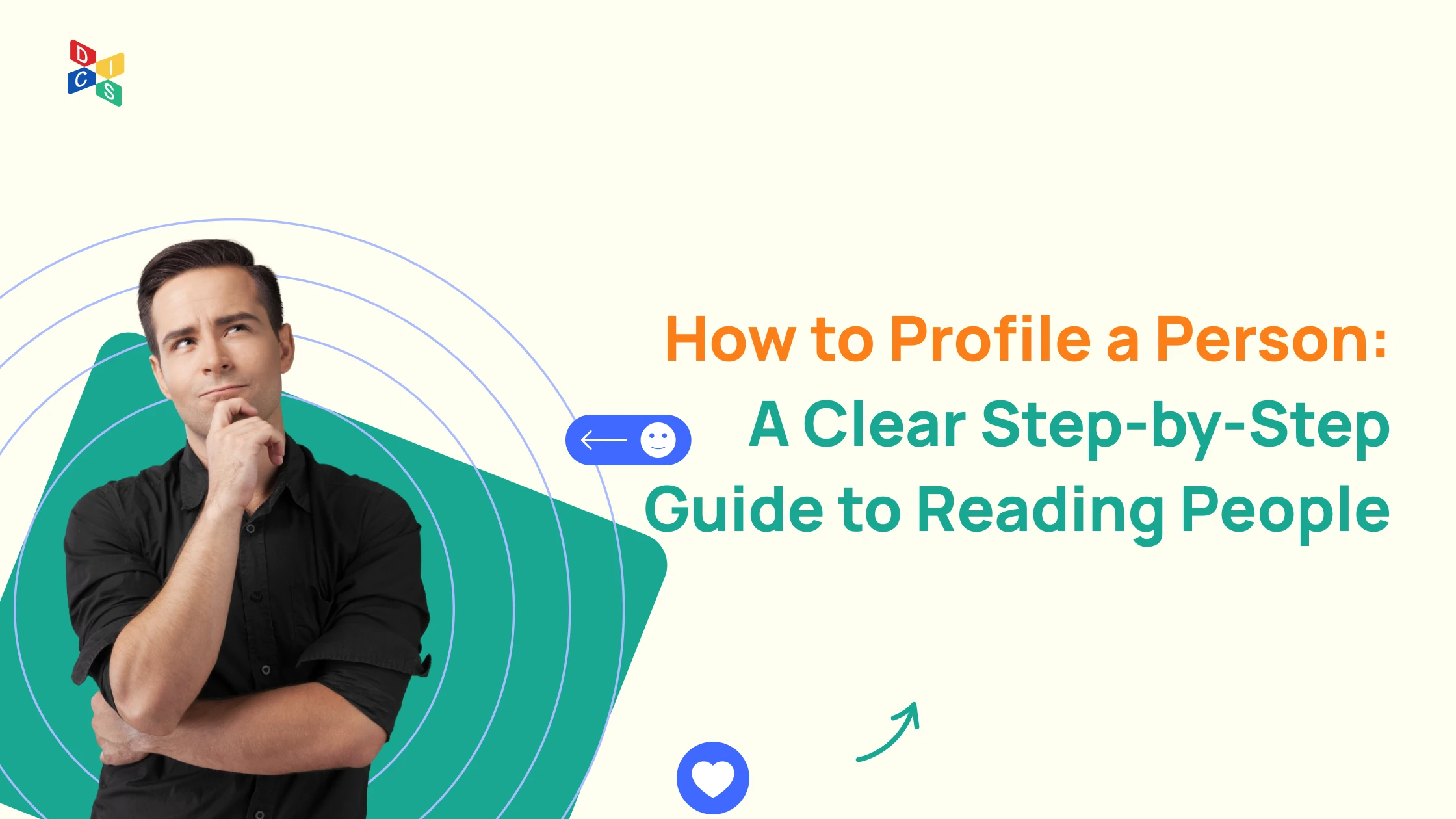 Self ExplorationDec 10, 2025
Self ExplorationDec 10, 2025How to Profile a Person: A Clear Step-by-Step Guide to Reading People
Learn how to profile a person step-by-step. Master practical techniques to read behavior, understand motives, and identify personality patterns accurately.
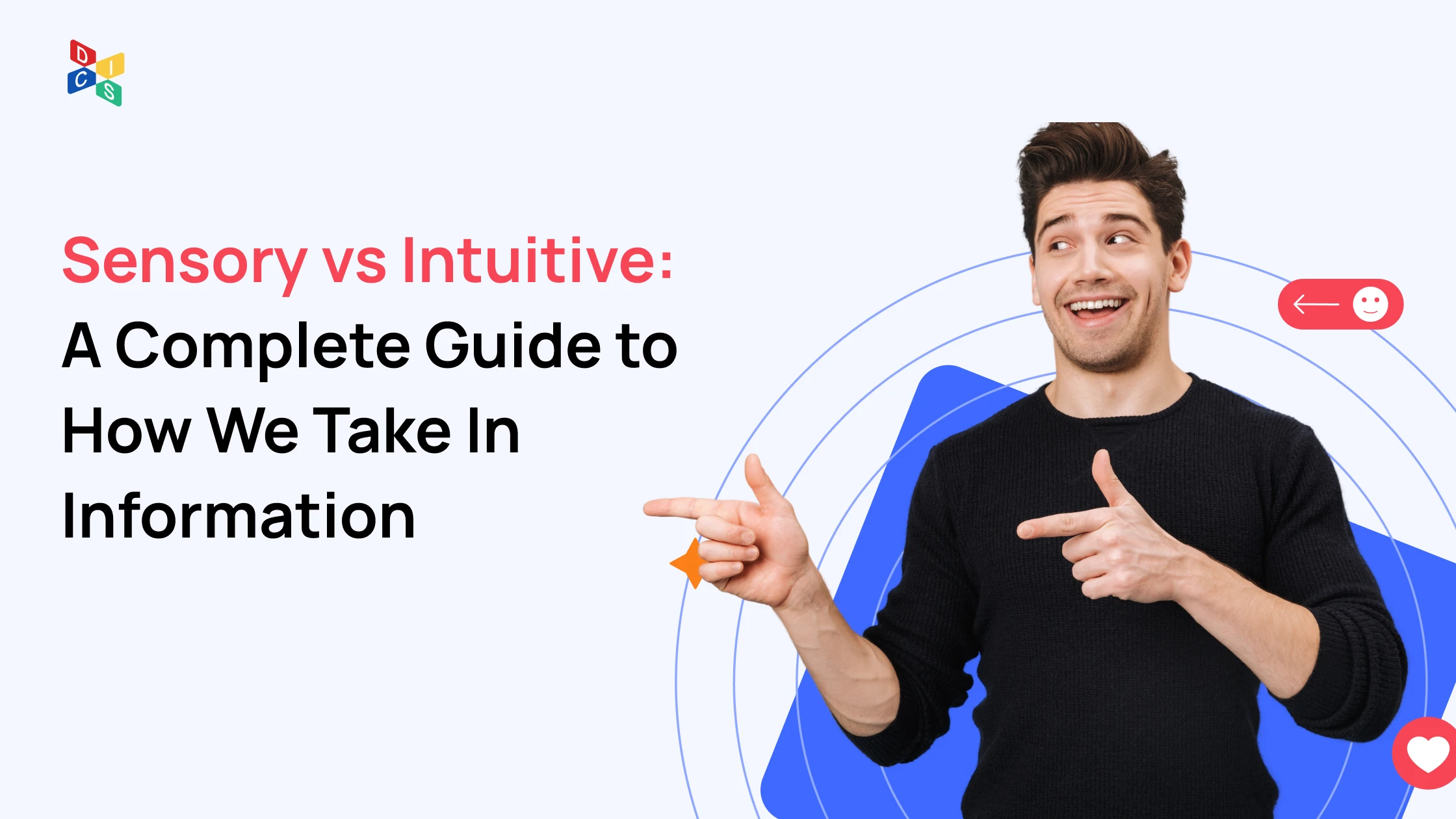 Self ExplorationDec 02, 2025
Self ExplorationDec 02, 2025Sensory vs Intuitive: A Complete Guide to How We Take In Information
Understand the core of sensory vs intuitive and why it influences every choice you make. Discover how each style boosts clarity, confidence, and connection.
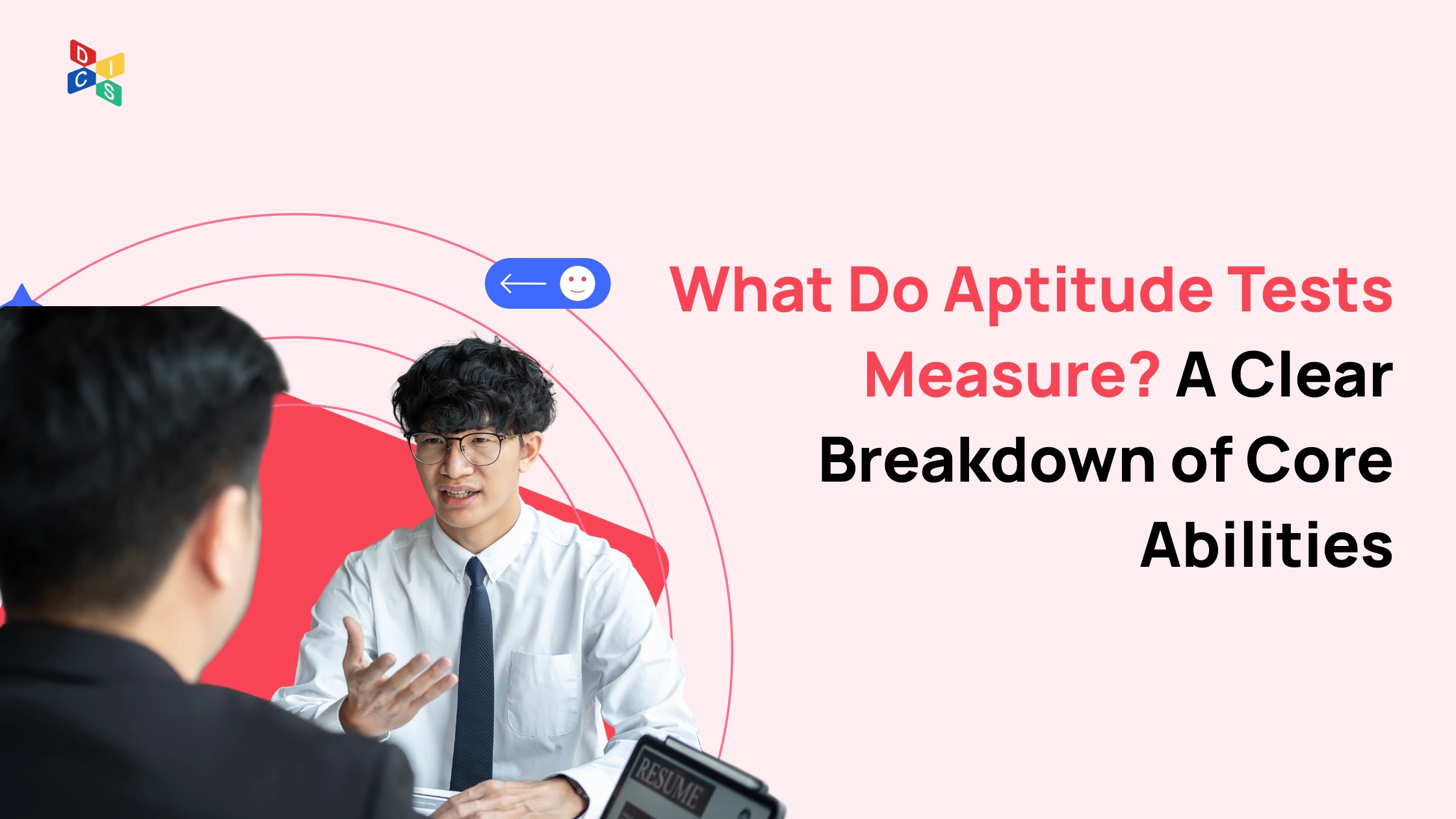 Self ExplorationNov 26, 2025
Self ExplorationNov 26, 2025What Do Aptitude Tests Measure? A Clear Breakdown of Core Abilities
Learn what do aptitude tests measure and why these abilities matter for your growth. Understand your potential and choose the right path with confidence.
